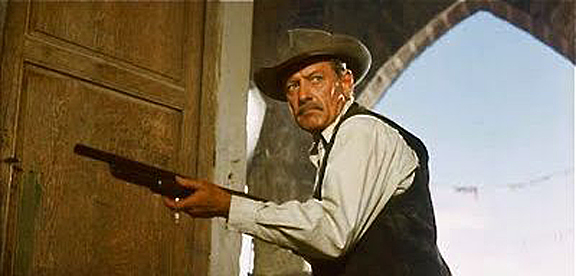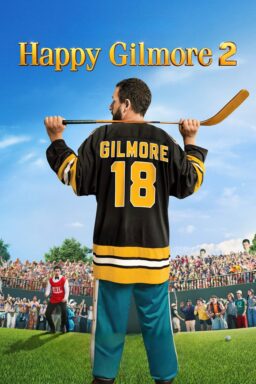FREEPORT, Grand Bahama Island — Sam Peckinpah’s “The Wild Bunch,” which is possibly the most violent film ever made, stirred up a bitter controversy here. Film critics splint into many camps at an extraordinary press conference, and even co-stars William Holden and Ernest Borgnine seemed slightly squeamish about the movie. But just about everyone agreed that “The Wild Bunch” will be this summer’s top box-office draw, for better or worse.
The film was screened for some 350 film critics during the weeklong Warner Bros. 7-Arts “international film festival,” festival, a showcase for six new Warners’ films. The audience reaction was extreme. Some people walked out. Others closed their eyes. When the lights went up, the applause was matched by boos and hisses. And then the arguments started. They are likely to continue all summer, providing fodder for countless articles and talk shows.
Peckinpah’s film is set in the Southwest and Mexico, circa 1913. The “bunch” of the title are a group of professional killers and bank robbers who have nearly reached the end of the line. They’re anachonisms, 25 years too late for the wild West, hoping to pull off one more good job and retire. A life of violence has unsuited them for anything else. They’re crude, filthy, bloodthirsty, raunchy and stupid. But they have a kind of honor and loyalty to each other.
The film opens with an extraordinary bloodbath of about seven minutes in length: a temperance parade is caught in the cross-fire between the Wild Bunch and a group of scurvy railroad gunmen led by Robert Ryan. Several civilians are gunned down just for the hell of it. The opening scene is he most violent I’ve ever seen on the screen–except for the closing scene.
By the films end, the bunch has escaped into Mexico and gotten involved in a scheme to steal U.S. army rifles for an ersatz rebel general. They’re double-crossed, caught between the general, Ryan’s men, and the Army. And in a final incredible bloodbath, some 200 men, women and horses die in an orgy of violence. You have never seen anything like it.
Having said this much, let me say that I admire “The Wild Bunch” and consider it an important act of filmmaking. It is easy enough to protest against the automatic violence of the Italian Westerns; it is legitimate to worry whether movie violence is somehow connected to the violence in American life. But “The Wild Bunch,” it seems to me presents death and violence in such a definitive (indeed, even excessive) terms that it becomes, paradoxically, a statement against violence, and a reaction to it.
Peckinpah (previous credits: “Ride the High Country,” “Major Dundee”) has, first of all, made a magnificently directed and acted film. Holden, Borgnine, Ryan and Edmond O’Brien are particularly effective in roles that make their previous tough-guy characterizations look transparent. Peckinpah has marshaled an army of stuntmen and special effects men for his battle scenes and for a tremendous scene of the destruction of a bridge.
And the final bloodbath is the most effectively photographed battle since Orson Welles‘ “Fallstaff.” Dying behind a machine gun, Holden maniacally mows down dozens of soldiers, civilians, anyone within range. “I never thought,” a lady in the audience complained, “that I’d live long enough to see William Holden shoot a woman.”
Peckinpah introduces a new technology of violence in those scenes. Blood actually spurts from gunshot wounds; we are shown the face of violence rather than the comic-strip substitute supplied by most Westerns.
All of this held little weight with most of the critics here, I gather. They considered the film to be an exploitation of violence — and they let Peckinpah and his co-stars have it with both barrels at a press conference the next morning.
“I have only one question,” said the lady from the Reader’s Digest. “Why was this film ever made?”
“We wanted to show violence in real terms,” Peckinpah said. “Dying is not fun and games. Movies make it look so detached. With ‘The Wild Bunch,’ people get involved whether they like it or not. They do not have the mild reactions to it.”
“Why did everyone bleed so much?” another lady asked.
“Lady,” Borgnine said, “did you ever see anyone shot by a gun without bleeding?”
But both Borgnine and Holden seemed to be rather dazed by the film themselves. Holden reportedly doesn’t like it much; he feels it’s too violent and needs additional cutting. Borgnine told the press conference: “When I was handed the script, to be quite honest with you, I did not read into it all the controversy it seems to have stirred up. I had made violent films before, of course; Westerns and war pictures. Ths is a script about people who have outlived their time, who have anachronisms. I accepted it on those terms.
“When we were actually shooting, we were all repulsed at times. There were nights when we’d finish shooting and I’d say, “My God, my God!” But I was always back the next morning, becasue I sincerely believed we were achieving something.”
What about the rumors, one critic asked, that there was a near-mutiny on the set in reaction to Peckinpah’s “overkill”?
“No mutiny,” Peckinpah said.
Another critic asked: “Don’t you think you may have occasionally passed over that thin line between what an audience is willing to accept, and what it isn’t? We felt that when the general slits the kid’s throat, that was the point beyond which we really had difficulty…”
“I know what you mean,” Peckinpah said. “There is a very, very thin line, and I think we operated as close to it as we dared. We hope that, for most audience, we stayed on this side of the line. But I am willing to admit that we may have passed over it at some point. We feel the violence is a catharsis, a release, but sometimes the line is hard to find.”
“To tell you the truth,” Peckinpah added after a short pause, “I really cannot stand to see the film myself anymore. It is too much an emotional thing. I saw it last night, but I do not want to see it again for perhaps five years.”












